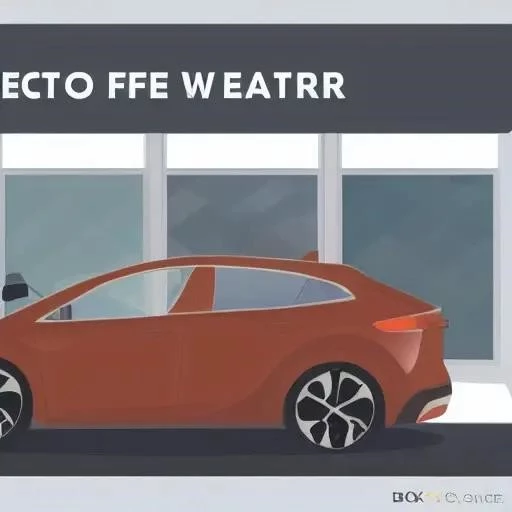
In the fiercely competitive landscape of the global automotive industry‚ one immutable truth consistently drives innovation: the customer’s evolving desires․ While flashy infotainment systems and sleek body designs often capture headlines‚ a less visible yet profoundly critical component—the transmission—is undergoing a remarkable metamorphosis‚ fundamentally reshaped by the nuanced demands of drivers worldwide․ This isn’t merely about shifting gears anymore; it’s about engineering the very essence of the driving experience‚ meticulously tailored to individual preferences for efficiency‚ performance‚ and sustainability․
For decades‚ the transmission served a singular‚ albeit crucial‚ purpose: transferring power from the engine to the wheels․ Yet‚ as consumer expectations have soared‚ embracing everything from unprecedented fuel economy to exhilarating acceleration and seamless electric propulsion‚ manufacturers are finding themselves on the precipice of a new era․ By integrating insights from advanced analytics and deep market research‚ they are crafting sophisticated systems that are not just functional but intuitively responsive‚ anticipating and fulfilling the diverse requirements of the modern motorist․ The future of automotive movement‚ having been meticulously refined by these demands‚ promises an exciting journey ahead․
Key Trends & Innovations in Automotive Transmissions Driven by Customer Needs
| Category | Key Information / Trend | Customer Need Addressed |
|---|---|---|
| Electrification Impact | Shift towards single-speed or multi-speed (2-4 speed) EV transmissions and e-Axles; integrated power electronics․ | Zero emissions‚ instant torque‚ enhanced range‚ smoother acceleration‚ reduced noise․ |
| Efficiency & Economy | Advanced Continuously Variable Transmissions (CVT)‚ Dual-Clutch Transmissions (DCT)‚ and sophisticated 8-10 speed automatics․ | Lower fuel consumption‚ reduced running costs‚ environmental consciousness․ |
| Performance & Dynamics | Faster shift times in DCTs‚ predictive shifting algorithms‚ optimized gear ratios for specific driving modes․ | Sportier driving feel‚ quicker acceleration‚ responsive handling‚ driver engagement․ |
| Comfort & Refinement | Smoother gear changes‚ reduced shift shock‚ improved noise‚ vibration‚ and harshness (NVH) characteristics․ | Luxurious driving experience‚ less fatigue‚ quiet cabin‚ seamless power delivery․ |
| Connectivity & AI Integration | Transmissions communicating with vehicle’s navigation‚ traffic data‚ and driver profiles to optimize performance․ | Personalized driving‚ predictive maintenance‚ optimal efficiency in varied conditions․ |
| Sustainability Focus | Lightweight materials‚ advanced lubrication‚ systems designed for longer lifespans and easier recycling․ | Reduced environmental footprint‚ lower lifecycle costs‚ ethical consumption․ |
| Reference: For deeper insights into automotive technology trends‚ visit S&P Global Mobility․ | ||
The evolution from cumbersome three-speed automatics to today’s remarkably sophisticated multi-speed transmissions and advanced CVTs perfectly illustrates this customer-centric journey․ Early drivers prioritized reliability; subsequent generations demanded fuel efficiency․ Now‚ the modern consumer seeks a holistic experience: a seamless blend of power delivery‚ environmental responsibility‚ and an almost telepathic connection between driver and machine․ Companies like ZF and Aisin‚ titans in transmission manufacturing‚ have consistently pushed boundaries‚ responding to these nuanced shifts by developing systems that are not just mechanically sound but intelligently adaptive․
Consider the paradigm shift brought about by electric vehicles (EVs)․ Traditional multi-gear transmissions‚ once the complex heart of internal combustion engine (ICE) vehicles‚ are often replaced by simpler‚ single-speed reduction gears in many EVs․ This seemingly radical simplification‚ however‚ is a direct response to the inherent characteristics of electric motors‚ which deliver instant torque across a broad RPM range‚ negating the need for multiple gears to optimize power delivery․ Yet‚ even within the EV realm‚ customer demand for extended range and higher top speeds is spurring innovations like two-speed or even multi-speed EV transmissions‚ expertly engineered by pioneers such as Porsche in its Taycan model‚ proving that efficiency and exhilaration can coexist harmoniously․
Beyond the electrification trend‚ the quest for ever-greater fuel economy in ICE vehicles has led to the proliferation of 8-‚ 9-‚ and even 10-speed automatic transmissions․ These intricate systems‚ featuring a wider spread of gear ratios‚ allow engines to operate in their most efficient RPM range for longer durations‚ significantly slashing fuel consumption without compromising performance․ Simultaneously‚ Dual-Clutch Transmissions (DCTs)‚ initially popularized in high-performance sports cars‚ have trickled down to mainstream vehicles‚ offering incredibly fast and smooth shifts that blend the efficiency of a manual with the convenience of an automatic․ This widespread adoption‚ driven by consumers desiring both spirited driving dynamics and everyday practicality‚ underscores the industry’s agility in meeting diverse demands․
Looking ahead‚ the integration of artificial intelligence and predictive analytics promises to unlock unprecedented levels of transmission optimization․ Imagine a transmission that‚ by integrating real-time traffic data‚ topographical information‚ and even your personal driving style‚ intelligently anticipates gear changes before you even consciously consider them․ This isn’t science fiction; it’s the near future․ Companies are already investing heavily in software-defined vehicles‚ where the transmission’s behavior can be updated and refined over the air‚ much like a smartphone app‚ ensuring your vehicle always performs at its peak․ This forward-thinking approach‚ having been meticulously developed through extensive research‚ promises a perpetually optimized driving experience․
The journey of the automotive transmission is a compelling narrative of continuous innovation‚ perpetually shaped by the voice of the customer․ From the clunky gearboxes of yesteryear to the highly intelligent‚ seamlessly integrated systems of tomorrow‚ each advancement serves as a testament to the industry’s unwavering commitment to delivering an unparalleled driving experience․ As we accelerate into an increasingly interconnected and sustainable future‚ one thing remains abundantly clear: the customer’s needs will continue to be the ultimate compass‚ steering the future of every component beneath the hood‚ ensuring that every drive is not just a journey‚ but a perfectly orchestrated symphony of power and precision․
